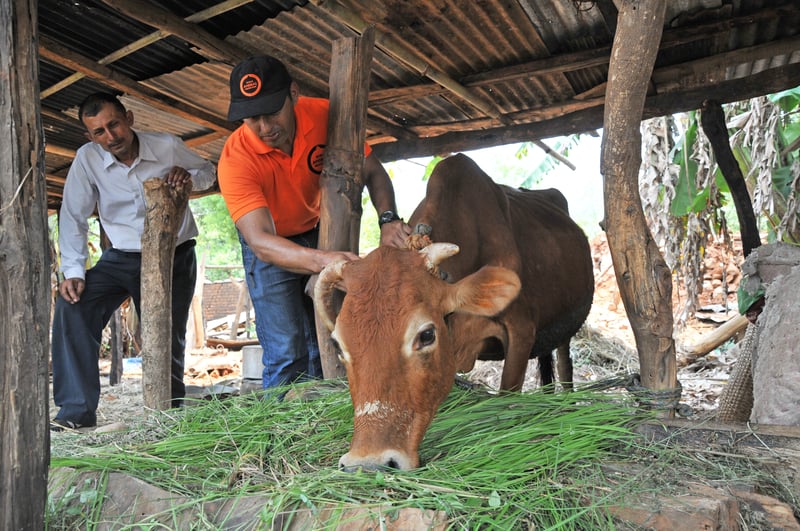
We are using your donations to help over 270,000 animals in Nepal
News
After two major earthquakes devastated Nepal in April and May this year, we have been on the ground working with local authorities to protect animals and their owners’ livelihoods.
Together with local vets, our disaster response team has been working with local communities to assess their needs and deliver emergency treatment to animals in urgent need.
We have been bringing you stories from our disaster response team, including local volunteer vet Uday Singh Karki, as communities struggle to come to terms with the aftermath of the earthquakes. In some of the worst hit regions, 95% of local families own animals and are reliant on them for their income. Hundreds of thousands of these animals were left injured, vulnerable to disease and without shelter after the earthquakes.
Assessing animal needs
To make sure your donations are used to protect the largest number of animals in the areas most in need, we carry out comprehensive assessments alongside the emergency treatment of animals in urgent need.
In Nepal animals are vulnerable to extreme weather conditions, from scorching sunshine, to monsoon rain and freezing overnight conditions. With most shelters destroyed or severely damaged in the earthquakes, this has been highlighted as a key need for animals in the country.
The stress caused by the earthquake has resulted in many animals refusing to use their damaged and rebuilt shelters. It has also had severe impacts on milk production in cows, buffalo and goats. This is not only a sign of extremely poor health, it is also causing huge problems for both the offspring of the animals who rely on the milk to survive, as well as the owners of the animals who depend on the milk for their livelihoods.
Protecting over 270,000 animals
Together with Nepal Government veterinarians, we will be addressing these issues and protecting over 270,000 animals in the country.
Thanks to your donations we can provide the materials for the construction of 1,400 brand new shelters in the worst hit areas. Over 8,000 animals will benefit immediately and an estimated 250,000 will come to benefit from the shelters over the next 7 years.
Poor quality food is also preventing livestock from recovering across the country. However higher quality food and supplements will become more readily available in the country over the coming weeks and months. So we are taking this opportunity to work with local communities to empower them to make the best choices for their animals.
Alongside this education campaign, the Veterinary Association of Nepal will be treating 20,000 animals across the Chautara district. Chuatara was among the worst hit districts in Nepal and your donations have provided the association with the medecine they need to ensure that some of the most vunerable animals in the country go on to live healthy and happy lives.
Thank you
Thank you to those of you who generously donated to our response in Nepal or shared our work with your friends and families. Without your help none of the above would be possible.
Stories from the ground in our blog
Our Animals in Disasters blog brings you the stories from our teams on the ground helping animals in disasters, as well as our work lobbying to ensure that animals are considered at the highest level of decision making.
Read the blog to stay up to date with how we are moving the world to protect animals in disasters with your help.
Thanks to your donations we can provide the materials for the construction of 1,400 brand new shelters in the worst hit areas. Over 8,000 animals will benefit immediately and an estimated 250,000 will come to benefit from the shelters over the next 7 years.